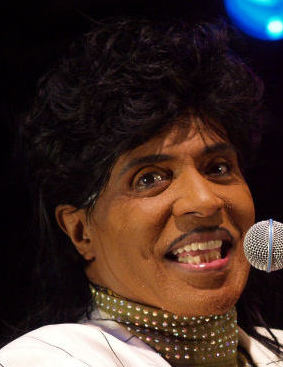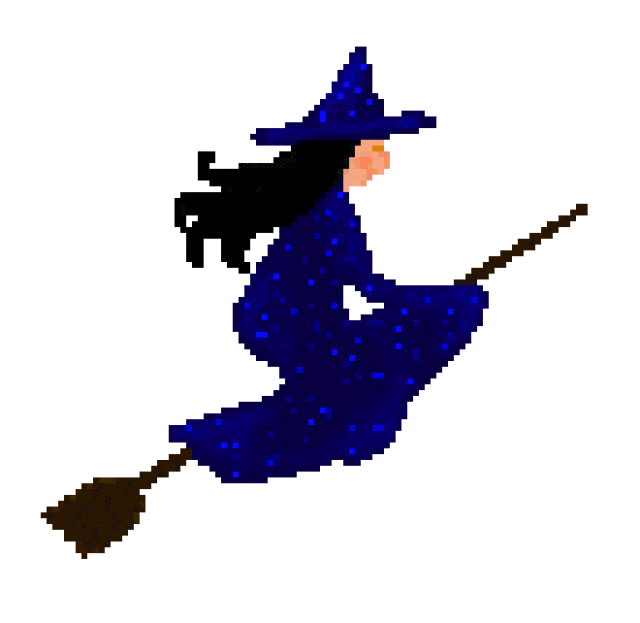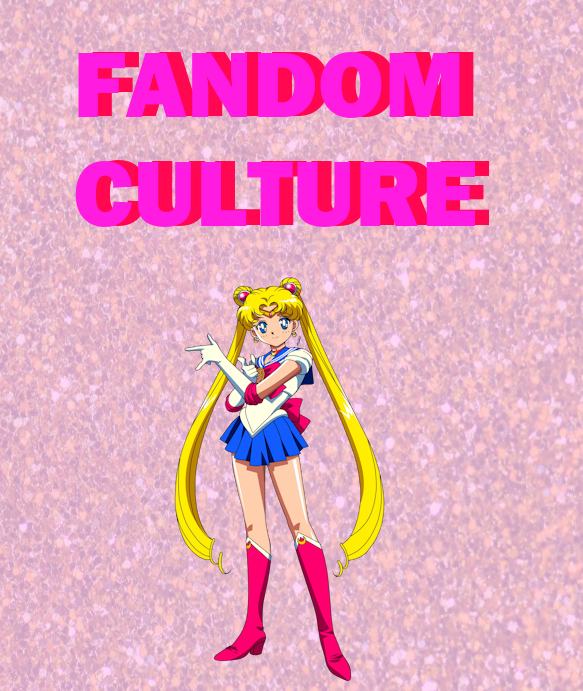WLMC Station Manager, Eden Kayser plays an album of ten songs from African American musicians and provides commentary on how Black music has changed since the 1950s.
This article and audio story is written from a project for the Summer 2 class, HIS3015, The History of African American Music Since the Civil War.
Listen to the album and commentary by clicking the link below.
Here is where you can find the songs in the recording.
1:45 – 4:30 Rocket 88 by Ike Turner
6:02 – 8:09 Good Golly, Miss Molly by Little Richard
9:36 – 12:10 Johnny B. Goode by Chuck Berry
13:45 – 16:44 Spanish Castle Magic by Jimi Hendrix
19:05 – 23:56 Proud Mary by Tina Turner
25:36 – 27:16 KKK by The Bus Boys
29:37 – 35:39 1999 by Prince
38:16 – 40:22 Banned in D.C. by The Bad Brains
42:34 – 47:23 Cult of Personality by Living Colour
49:38 – 54:56 Servitude by Fishbone
The Rock ‘n’ Roll genre can American Rhythm and Blues, Swing, Boogie-Woogie, Urban Blues, Latin Rhythms, Country and Western, Rockabilly, and Tin Pan Ally with a more aggressive beat. Rock ‘n’ Roll songs typically include themes about love, racism, cultural influences, daily life, and segregation. Key instruments include the electric guitar, bass, drums, and piano. African American singers and songwriters were the first to introduce the sound of Rock ‘n’ As you’re listening to the songs I’ve selected, try to look through the lives of Black Americans through these musicians’ perspectives. This is especially important in the 1950s, a time when the Civil Rights movement started and there was growing fear of Communalism in America. We will be covering songs from the 1950s and make our way into the 1990s, so try to consider how African American music has changed over the 20th century.
The first Rock ‘n’ Roll record is widely considered to be Rocket 88, played by Ike Turner’s band, the Kings of Rhythm, and vocalized by Jackie Brenston and His Delta Cats. Rocket 88 was recorded in 1951 by Ike Turner and the Kings of Rhythm. Ike Turner and His Kings of Rhythm was an R&B and Soul group which consisted of Ike Turner, Willie Kizart, Raymond Hill, Willie Sims, and Jackie Brenston, all between ages 17 and 20. The group mostly played at small clubs in the south until they were discovered by B.B. King who connected them with the famous producer Sam Philips. On their way to the recording studio in Memphis they wrote about Rocket 88, which was a popular new Oldsmobile model, and considered to be the fastest car at the time. On the drive there, Kizart’s amp fell out of the trunk which damaged the woofer and speaker cone. , newspaper was stuffed in the speaker cone which instead created distortion and buzzing, this along with the youthful energy, boogie rhythm, abrasive sound, and suggestive lyrics give it a more distinguished sound from R&B.
Rocket 88 helped desegregate radio stations by being the first Black record to be played on a white radio station, as radio stations tended to only play specific genres for a Black or white audience. It also inspired future musicians such as Little Richard, one of the earliest Rock ‘n’ Roll musicians, making it very important to Rock ‘n’ Roll and African American history.
Little Richard uses Rocket 88’s piano intro in his recording of Good Golly, Miss Molly our next song, from 1956. Good Golly, Miss Molly was written by Bumps Blackwell and John Marascalco and performed by Little Richard in 1956. Little Richard was born as Richard Penniman in Macon, Georgia in 1932. Being born in a religious household as a child to a pastor, he was not allowed to play secular music. At age 16, he left home to perform in Chitlin’ Circuit and as a drag performer for vaudeville shows. In the early 1950s he took the stage name “Little Richad”, learned to play boogie-woogie piano, and played with a band called the Upsetters. His talent was recognized, and Specialty Records hooked him up with producer Robert Blackwell.
After the release of his first big record, Tutti Frutti in 1955, it was covered by teen idol Pat Boone which upset Little Richard as it out-sold his own record. During the production of Good Golly, Miss Molly, Blackwell also recorded the song with The Valiants before the release of Little Richard’s version. However, once it was released, it became the definitive version, rising to #4 on the Billboard playlists. The song was later covered by Jerry Lee Lewis and Mitch Ryder & the Detroit Wheels.
Our next song is from the famous African American musician, Chuck Berry who performed the first Rock ‘n’ Roll hit about stardom. This is Johnny B. Goode from 1958. Johnny B. Goode is loosely written as an autobiography to Chuck Berry. In 1972, Berry told Rolling Stone that the line “That little country boy could play”, was originally written as “colored boy” but changed it so it could go on the radio. He also butchered his narrative by using Louisiana instead of Berry’s hometown St. Louis. The lyric .
Chuck Berry worked as a beautician in St. Louis when he was discovered by Muddy Waters in 1955 who sent him to Chess Record’s co-founder Leonard Chess. He then became a consistent hitmaker who wrote his own classics. Elvis Presley once said, “I just wish I could express my feelings the way Chuck Berry does.” Johnney B. Goode’s rhythm, momentum, and the way Berry plays notes in the chorus is a good example of how a Rock ‘n’ Roll song can make the audience feel on top of the world.
One famous African American musician from the 1960s is Jimi Hendrix, who released hits such as Hey Joe, Purple Haze, and The Wind Cries Mary. He also played The Star-Spangled Banner at the 1969 Woodstock Music Festival. Today, I’m playing his song Spanish Castle Magic released in 1967. Spanish Castle Magic is a song about a nightclub in Seattle, Washington that Jimi Hendrix went to called Spanish Castle Ballroom. It was a historic structure built and designed as a storybook castle which first opened in 1931. Hendrix grew up in Seattle which was a very segregated city at the time. As a teen in the late 50s and early 60s, he spent his nights at the Castle hanging around the stage and would ask to sit in and play along with the local bands. Despite being rejected many times, he desperately wanted to be part of the music scene and would even bring his own amp in case one of the bands blew theirs. In an interview with O’Day recalled when the Checkmates used Jimi’s amp and as a part of a deal, he got to play his axe on the side of the stage.
Jimi Hendrix, born as Johnny Allen Hendrix, had a difficult childhood. His mother left the family, having a toxic relationship with his father, and sometimes he would live with his relatives or acquaintances. He learned to play guitar as an escape and dropped out of high school in 1959 to play in his band, The Rocking Kings and follow his musical aspirations. He joined the Army in 1961 where he formed another band called the King Kasuals and was honorably discharged in 1962 after a parachute accident. He started working under the name Jimmy James and played backup for musicians like Little Richard, B.B. King, Sam Cooke, and the Isley Brothers. He also played gigs in New York City in a group called Jimmy James and the Blue Flames. In 1966, he met Chas Chandler, who agreed to become his manager and convinced him to move to London where he formed the Jimi Hendrix Experience with bassist Noel Redding and drummer Mitch Mitchell. A year after the release of Spanish Castle Magic, the structure was bulldozed following a tragic accident where three teenage girls were hit by a car while crossing the road to the castle.
The next song I’ll be playing is a famous cover of Proud Mary recorded in 1971 by Tina Turner and her husband at the time, Ike Turner. As Tina Turner promises in her spoken introduction, they will take things “nice and easy” but will end it “rough”. The song Proud Mary was written by John Fogerty, lead singer of Creedence Clearwater Revival and originally released in 1969. When Fogerty received discharge papers from the military in 1967, he wrote about leaving a steady job in the city and starting a new life on the river. Tina Turner loved the song so much she wanted to make her own rendition of it and created what she called “the black version of it”. The version was a tremendous success, selling over a million copies, reaching Number 4 on the Billboard, Number 5 on the R&B chart, and earning a Grammy Award for Best R&B Vocal Performance by a Group in 1972.
The success of Proud Mary helped Tina Turner have a hit solo career after her divorce from Ike in 1978. She continued to perform in clubs and hotels, record new albums, and release hit covers such as Al Green’s Let’s Stay Together in 1983. She was soon packing arenas and stadiums and Proud Mary became a staple of her live shows. When Beyonce herself performed the track in 2005, she said in a speech that she has never seen a woman so powerful, fearless, and fabulous. Tina told Haute Living magazine that she associates the song with “Freedom.”
Despite the success of some Black musicians, racism and discrimination against African Americans were still prevalent in American society. This is addressed in the Bus Boys’ song, KKK from 1980. This song is a satirical commentary from the perspective of a Black man in a racist society and uses the n-word. In the first verse of KKK, the singer from the Bus Boys mentions being denied his right to fight in the Vietnam War for the color of his skin. Despite being a loyal and obedient US citizen, and being deemed fit to join the military, he is discriminated against for his racial identity. The use of the racial slur in this song is meant to show he is more than his skin color and any slur used against him. In the song’s chorus, he sarcastically states that he wants to join the Ku Klux Klan, a white supremacist hate group with a history of committing violent acts toward Black Americans. This is immediately contradicted by saying he wants to play in a rock ‘n’ roll band, a genre of music heavily influenced by Black musicians. This is meant to highlight the absurdity of racism, and society’s judgment based on race instead of who they are as individuals. This song emphasizes frustration over the struggle for racial equality in America.
The Bus Boys began performing as a group of teenagers in 1980. Not only did they perform on the stage, but they were well known for their music on television and in film. Their songs were featured on soundtrack albums for major Hollywood studios, national television commercials, and they played on-screen for American Bandstand, Soul Train, Rock Concert, and Saturday Night Live. Their performance on Paramount blockbuster film, 48 HRS, was internationally acclaimed when they debuted their classic, The Boys Are Back In Town. They also released the multi-platinum soundtrack for the movie, Ghostbusters. The success of The Bus Boys changed the direction of rock ’n’ roll as well as increased acceptance of Black musicians.
Another highly successful African American musician is Prince. Born in Minneapolis, Minnesota in 1958, he could not only sing, but also play the guitar, bass, drums, and keyboard, while also writing his own songs, dancing, and producing, making him an exceptionally talented and rare musician who could perform in all roles. I’ll be playing one of his most famous songs, 1999, originally released in 1982. In the same way that the song KKK mocks racism, 1999 mocks Armageddon, the idea that the world will soon end by nuclear war. The early 1980s was at the time, considered the closest the world had come to nuclear war which people fear will cause the end of the world as former president Reagan administrated stockpiling of nuclear weapons for the Cold War against the Soviet Union. Prince addressed this fear in the lines “everybody’s got a bomb, we could all die any day”. Besides the Cold War, the approaching new millennium brought its own concerns to human life. Since computer programmers did not always plan for the year change to 2000 in their code, there was fear that major networks would be compromised leading to the end of the world. This was known as the Y2K bug. Since the year 1999 was seemingly far away, and people were already fearing death, Prince wrote 1999, as a celebration of life, to enjoy the present and party like there’s no tomorrow. The song was a major success, hitting the Billboard Hot 100 twice in the 1980s, the actual year 1999, and after Prince’s death in 2016.
Prince’s career began with performing funk and soul music marketed toward a Black audience, with the influence of disco. Growing up in Minneapolis, there were very few African American residents, he was unlikely to develop as a Black musician in his hometown but proved them wrong. The lyrics in his music often address sexuality and the struggle with social conventions and categories. One of his biographers said, “The whole thrust of Prince’s art can be understood in terms of a desire to escape the social identities thrust upon him by simple virtue of his being small, black, and male.” His music is also known to have a religious impulse with roots of African American churches. His first big crossover hit, Little Red Corvette from 1983, was played on MTV and became one of the first Black artists to appear on the medium. His best-selling album, Purple Rain from 1984, made him a major star as it became an Academy Award-winning soundtrack to the Grammy Award-winning Purple Rain film, which included the hit singles, Let’s Go Crazy and When Doves Cry.
We’re now going to listen to a hardcore punk rock song, from the Bad Brains, that addresses their blacklisting from clubs in Washington D.C. This is their song, Banned in D.C., which appeared on their debut album in 1982. The Bad Brains are a Black punk-rock group who played in D.C. during the late 1970s. Their loud, fast, and aggressive music was popular with audiences but not with club owners. An overly energetic audience attracted to punk music played by Black men did not sit well with some owners who feared their music would cause violence and destruction in their venues. This did not match the Bad Brains’ philosophy, which was aligned with nonviolence and positive mental attitude. Despite this, they were blacklisted from playing at cubs in D.C. area. There is some evidence that the ban of the Bad Brains may be due to racial prejudice as other bands like The Teen Idles and The Untouchables were never banned for their similar performances. As a result, the Bad Brains relocated to New York City in 1980 where they gained a fan base and made trips back to D.C. as their blacklisting faded.
The Bad Brains were formed in 1977, featuring Gary Miller as lead guitarist, Paul Hudson as rhythm guitarist, Darryl Jennifer playing the bass, and Earl Hudson on the drums. They were originally a jazz fusion group called Mind Power but became frustrated with stylistic and thematic limitations, and wanted a newer, more exciting sound. Being inspired by the Sex Pistols, the Ramones, and the Rastafarianism faith they began playing high-speed punk rock with reggae tunes. The Bad Brains stood out from other bands as four Black men playing angry sounding music that was also spiritual and embraced Positive Mental Attitude which gave a different message from other punk rock bands. Their albums provided a powerful statement in their songs, including their 1982 self-titled debut, I Against I from 1986, and Build a Nation from 2007.
Our next song, Cult of Personality from Living Colour in 1988, addresses issues caused by dangerous political leaders and the consequences of allowing them to lead with unquestioned authority. In Cult of Personality, Living Colour uses Benito Mussolini and Joseph Stalin as examples of toxic leaders who let down the people who followed them. It also uses samples of speeches from John F. Kennedy, Malcom X, and Franklin D. Roosevelt to enhance the political agenda and remind us of how politicians let down the common man. As guitarist Vernon Reid explained, “Cult of Personality was about celebrity, but on a political level, it asked what made us follow these individuals who were larger than life yet still human beings.” He then compares his message with civil rights activists, “Aside from their social importance, Malcom X and Martin Luther King both looked like matinee idols. That was a strong part of why their messages connected. Even now it’s why Barack Obama has that certain something.” Cult of Personality earned a Grammy award for 1989’s Best Hard Rock Performance. It would later be re-recorded for the 2007 video game Guitar Hero III and was used by former wrestler CM Punk at WrestleMania in 2013.
When the band Living Colour released their debut album Vivid in 1988, they mixed the sounds of metal, pop, and funk into songs that addressed racism, poverty, housing, and personality cults. From there they created two more albums, before their split in 1995. The band got back together in 2002, and released their most recent album Shade, which addresses modern racism, Donald Trump, hip-hop, Elvis Presley, and the band reuniting. In an interview with Paste, Vernon Reid talks about the subject of racism in his songs, saying that he felt there was either avoidance of the conversation or denial that it existed. Reid says including messages about racism in their songs like Broken Hearts and Love Rears Its Ugly Head is important to starting a conversation “because they’re about life and making mistakes and how do we recover?”.
The last song I’ll be playing is Fishbone’s song Servitude from 1993 which like Cult of Personality, also questions authority and serving people deemed superior. The meaning behind Servitude by Fishbone asks why the protagonist serves the antagonist and also questions their honor and if they’re willing to lie or kill for them. The song’s lyrics also question what the protagonist will write about, who they pray to, and if they believe money is worth their sins. The song is about waking up to the truth and refusing to serve those in power.
The band Fishbone began playing in the early 1980s and consisted of six African American teenagers from Los Angeles including Angelo Moore, Christopher Dowd, Walter Kibby II, Kendall Jones, Philip Fisher, and Norwood Fisher. They migrated to many kinds of music including ska, punk, jazz, metal, funk, ragtime, reggae, soul, gospel, protest songs, and party anthems. Their story is featured in the film Everyday Sunshine: The Story of Fishbone which shows their ups and downs. The film shows vintage concert footage, and documents how the band could have had a breakthrough with The Reality of My Surroundings making it onto the Billboard Top 50 and having a spot on the Lollapalooza tour in 1993 but the band seemed too odd for mainstream audiences. There were also internal conflicts among band members during the recording of the 1993 album Give a Monkey a Brain and He’ll Swear He’s the Center of the Universe, where Jones suddenly quit to join a religious group and Norwood Fisher was arrested for kidnapping when trying to stage an intervention for Jones. He and Moore were the only remaining funding members by the time of the Everyday Sunshine’s filming. However, toward the end of the film, all six original band members are seen reunited teasing the possibility of a reunion in the lineup. The story of Fishbone shows how not every band, though talented, may find mainstream success and become rich.
The history and messages in these songs are very important to understanding the experiences of African American musicians and their identities. I encourage you to go out and find more songs by these artists and others as there are a lot more songs and genres to explore on this topic.
For more music commentary, and other great audio stories go to http://wlmc.landmark.edu/ for more music, talk shows, news, sports, and other original content. Be sure to also check out the WLMC Show Schedule – VOICES (lcvoices.com) to catch WLMC DJs live on the air.







